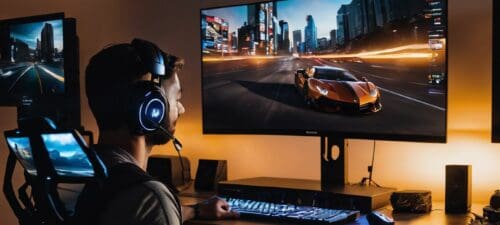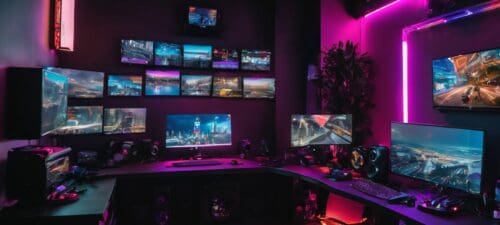AI Scouting in Esports: Unlocking Next-Level Talent Discovery
Updated On: October 23, 2025 by Aaron Connolly
What Is AI Scouting in Esports?
AI scouting in esports leans on artificial intelligence and machine learning to spot and evaluate gaming talent automatically. It sifts through player stats, gameplay videos, and match numbers to find promising players way quicker than the old-school methods.
Defining AI-Driven Talent Scouting
AI-driven talent scouting uses computer algorithms to find skilled players across all sorts of esports titles. Instead of humans having to watch hours of gameplay, artificial intelligence crunches match data and footage on its own.
These systems look at key performance metrics like reaction time, accuracy, and decision-making. They’ll track thousands of players at once, no matter the platform or tournament.
The tech finds patterns people might overlook. Maybe an AI system notices a player who always makes smart positioning moves under pressure, even if their kill-death ratio isn’t flashy.
AI scouting tools like Rival.ai comb through everything from amateur matches to pro tournaments. They build detailed player profiles, pointing out strengths, weaknesses, and where someone could improve.
Key Technologies Powering AI Scouting
Machine learning pretty much powers modern esports scouting. These algorithms learn from mountains of pro gameplay, figuring out what makes someone good—or even great.
Computer vision looks at video, frame by frame. It tracks where players move, how they aim, and what tactical choices they make, all without a person needing to watch.
| Technology | Function | Example Use |
|---|---|---|
| Machine Learning | Pattern recognition | Identifying clutch performance |
| Computer Vision | Video analysis | Tracking crosshair placement |
| Data Analytics | Statistical evaluation | Calculating improvement rates |
| Natural Language Processing | Communication analysis | Assessing team coordination |
Performance prediction algorithms try to guess how players might develop. They factor in age, practice time, and learning curves to forecast potential.
Real-time analysis lets scouts check out players during live matches. The AI spits out instant feedback on big plays and strategy calls.
How AI Scouting Differs from Traditional Methods
Traditional scouting leans on human observation and personal judgement. Scouts sit through matches, jot down notes, and make calls based on what they see and feel.
AI scouting just chews through data, staying objective and consistent. It won’t get tired or distracted, which is more than you can say for most humans after a long tournament day.
Speed is the real game-changer. AI-powered tools can spot up-and-coming talent in esports academies about 30% faster than people, at least according to recent numbers.
Human scouts usually focus on obvious stuff—kills, wins, that sort of thing. AI digs deeper, finding micro-decisions, positioning, and teamwork that actually determine who sticks around.
Cost matters, too. Human scouts need travel, hotels, salaries. AI can watch the whole world’s talent pool at once and costs way less.
But let’s be honest—AI still struggles to judge personality fit or communication skills the way an experienced scout can when they meet someone in person.
Core Technologies Behind AI Scouting
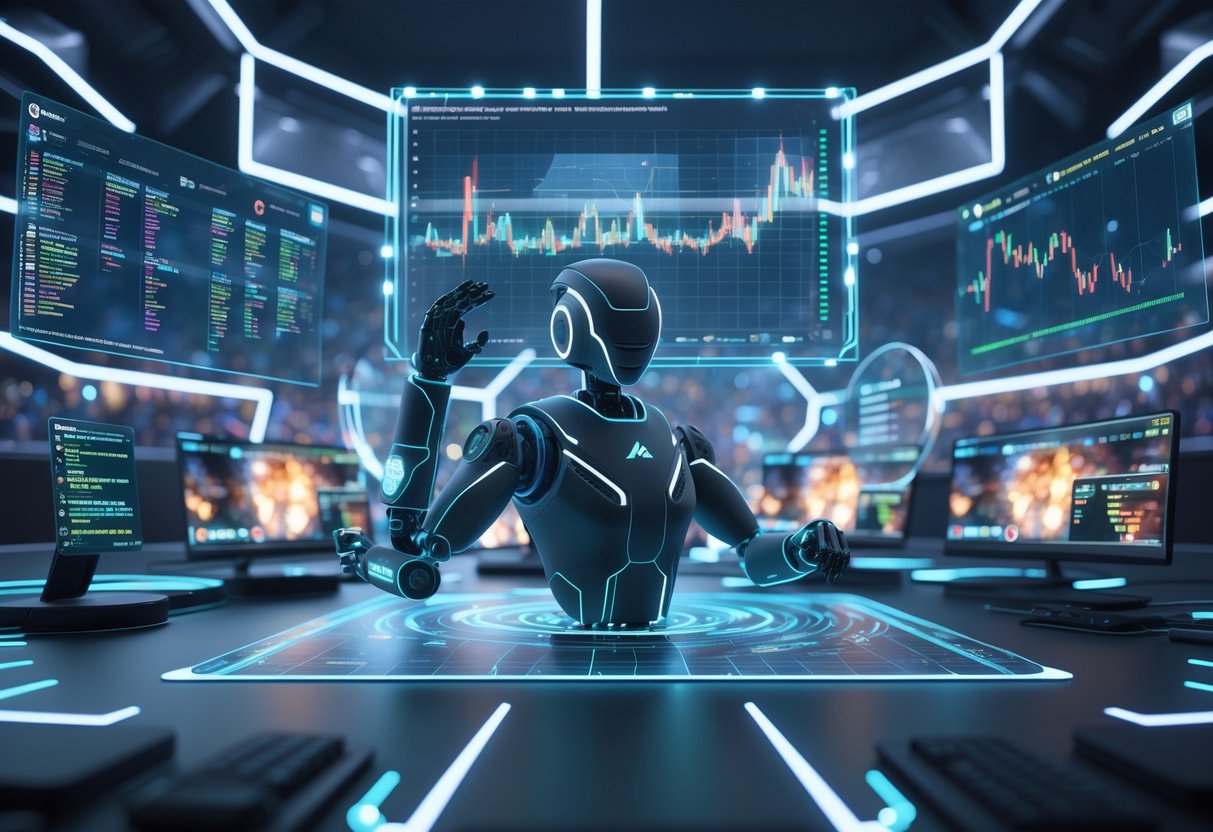
AI scouting systems use machine learning algorithms to break down player performance data, natural language processing to get insights from chat and calls, and image recognition to judge gameplay. These tools combine to spot talent way faster than traditional scouting.
Machine Learning for Player Evaluation
Machine learning algorithms chew through mountains of player data, spotting patterns that most scouts would miss. These systems look at everything from reaction times and accuracy to how quickly someone makes decisions in-game.
Key performance metrics:
- Kill-to-death ratios and steadiness
- Strategic decision-making
- Team coordination skills
- Handling pressure
The algorithms compare current players to a database of top pros. This helps predict who might have what it takes to compete at the next level.
A lot of esports orgs use predictive analytics to map out player development. The tech can even flag players who might struggle with certain roles or thrive in specific team setups.
Heads up: Machine learning models need months of data to really work, so they’re not as reliable for total newcomers.
Natural Language Processing Applications
Natural language processing (NLP) breaks down player communications during games and practice. It’s especially handy for figuring out leadership and team chemistry.
NLP systems scan voice and text chat, plus social media. They look for communication styles that match up with winning teams and positive vibes.
What NLP checks:
- How often and clearly someone calls shots
- Patterns of positive encouragement
- Who leads the strategic talk
- How players handle conflicts
The tech also watches public chat for reputation. Teams want players who make their brand look good on streams and socials.
Some systems even analyse in-game callouts to gauge tactical awareness. Players who give clear, helpful info tend to become team leaders.
Image Recognition in Talent Identification
Computer vision digs into gameplay footage to judge mechanical skills and tactics. These systems break down hours of gameplay in minutes.
The tech tracks movement, crosshair placement, and positioning, frame by frame. It gives hard numbers for things like aim and map awareness.
Key visual analysis:
- Crosshair habits and pre-aiming
- Movement and positioning
- How players manage resources
- Adapting to enemy strategies
Image recognition compares players to top pros. It can even spot unique playstyles that might work at higher levels.
Scouts use these tools to check out players from regions with less coverage. The tech opens doors for talent by reviewing footage from smaller events and streams.
Benefits of AI Scouting for Esports Teams
AI scouting helps teams find better players faster and can cut recruitment costs by up to 40%. Teams now analyse thousands of hours of gameplay in minutes, catching talent patterns that human scouts might never see.
Faster and More Accurate Talent Identification
Traditional scouting drags on for months just to size up one player. AI systems process footage from multiple matches at once, watching everything from reaction time to strategy.
Key Metrics AI Tracks:
- Kills per minute in different game states
- Decision-making under pressure
- Teamwork and communication
- Clutch plays in big moments
Teams like Cloud9 say they find promising players 60% faster with AI tools. The tech spots tiny gameplay patterns that show a player’s real ceiling.
AI doesn’t get tired or cranky. It judges every player by the same standards, so teams get consistent results across all their prospects.
Fast tip: Teams can scout whole leagues in days instead of flying scouts to dozens of tournaments.
Reducing Bias in Recruitment
Human scouts often stick to players from familiar regions or popular streams. AI ignores those biases and just looks at the numbers.
The tech judges players on what they do—not who they are or how many followers they have. This has helped teams find hidden gems in overlooked areas.
Biases AI avoids:
- Picking locals over outsiders
- Age-based assumptions
- Letting streaming fame sway decisions
- Getting stuck on old team reputations
Teams using AI scouting end up with more diverse rosters. Players from smaller regions finally get a fair shot based on what they can actually do.
James Connolly, a gaming expert, put it well: “AI has opened doors for talented players who might never have been noticed through traditional scouting networks.”
Enhanced Decision-Making with Predictive Analytics
AI predicts how players will perform on different teams or when the game meta shifts. This helps teams dodge expensive recruitment mistakes.
The tech studies past performance to guess where a player’s headed. Teams can see who’s likely to improve and who’s probably peaked.
Predictive analytics can show:
- Consistency across tournament types
- How fast someone adapts to patch changes
- Leadership potential
- Chances of injury from heavy practice
Some pro orgs say they keep 35% more players when they use predictive analytics for recruitment. Smarter contracts, fewer regrets.
One catch: Predictive models need lots of data, so they’re a bit shakier for newer games.
AI-Enhanced Data Analysis and Player Metrics
AI turns raw gameplay data into insights that shine a light on hidden player potential. These systems process thousands of match stats at once, tracking reaction times and strategic choices across tournaments.
Analysing Match and Game Statistics
AI systems crunch huge amounts of match stats during live games. They track kill-death ratios, damage per minute, and objective control with a level of detail humans just can’t match.
Machine learning spots patterns in player behavior that traditional analysis misses. For instance, it might find that a player’s accuracy drops 15% when a certain opponent’s in the lobby.
Game stats get more useful once AI links them across matches. The tech can predict how someone will do against certain team comps using past games.
| Traditional Analysis | AI-Enhanced Analysis |
|---|---|
| Basic K/D ratios | Contextual performance under pressure |
| Manual data entry | Real-time automated tracking |
| Limited pattern recognition | Complex behaviour predictions |
Teams use these insights to make smarter calls about recruitment and team building. Coaches figure out which players click together best when it counts.
Advanced Performance Tracking
Data science in esports now tracks micro-movements and reactions that used to be invisible. AI monitors mouse sensitivity, keyboard timing, and even eye movement during games.
Performance tracking goes beyond the basics. The tech looks at communication, stress levels, and decision speed under pressure.
Modern esports tech can even spot player fatigue before it tanks performance. These systems watch for slowing reaction times and suggest when to take breaks.
Teams mix biometric data with gameplay stats for full player profiles. They can tell when someone’s off their game before it shows up on the scoreboard.
Utilising Tournament Statistics
Tournament stats give AI systems a treasure trove of data across seasons. These platforms track performance trends through patch cycles and meta shifts.
AI compares player stats to tournament averages to find undervalued talent. The tech spots players who keep outperforming expectations in tough, high-pressure matches.
Cross-tournament analysis shows which teams adapt best to different formats. Some squads crush best-of-threes but stumble in longer series.
The data even helps tournament organisers tweak seeding and brackets. AI can predict which matchups will be the most competitive and fun to watch.
Recruiters rely on tournament data to find players who perform consistently across all sorts of environments. This cuts the risk of signing someone who’s only good in one specific setting.
Player Evaluation and Deskilling Talent
Modern AI systems now break down millions of data points to spot skilled players and size up their potential. These tools help teams find talent faster and give detailed performance comparisons against the best in the business.
Automated Player Assessment Tools
AI-powered assessment tools have really shaken up how teams scout esports talent. These systems dig into gameplay footage, match stats, and performance data to build detailed player profiles.
Chosen1.ai taps into machine learning to spot standout players from millions of hopefuls. Their system sorts players into three groups: immediate impact, future cornerstones, and high-potential prospects.
Rival.ai takes a different approach by focusing on performance analysis from gameplay videos. They use image recognition and machine learning to put together scouting reports that teams can actually use.
Here are the main things these tools check:
- Reaction times and mechanical precision
- Decision-making speed when things get tense
- Team coordination and how players communicate
- Adaptability to different game strategies
Most AI coaching apps now come with at least some evaluation tools. Semi-pros can spot their weak points before teams even start a formal scouting process.
Scouts save hundreds of hours thanks to this tech. Instead of slogging through endless matches, they get filtered recommendations backed by real data.
Benchmarking Against Top Competitors
AI systems thrive when it comes to comparing players with the pros. They break down how up-and-comers stack up against established stars in each game.
Performance gap analysis shows exactly where players lag behind pro standards, like aim accuracy, positioning, and resource management.
Modern scouting tools spit out detailed comparison reports. Teams can see where a player shines and where they need work, especially compared to current roster members.
Teams use this info to guess how well a new player might fit in. AI models crunch the numbers to see if a prospect’s playstyle meshes with the team’s vibe.
Growth trajectory mapping helps teams spot players who keep improving. It’s a big deal when you’re trying to tell who’s peaked and who’s still climbing.
But let’s be real—AI tools sometimes miss the big picture. They’re fantastic at measuring mechanics, but those subtle, strategic calls? Human scouts still catch things that AI can’t.
The best teams mix AI with old-school scouting. That way, they find both the statistical outliers and the clever tacticians who might slip through if you only looked at the numbers.
AI Scouting in Popular Esports Titles
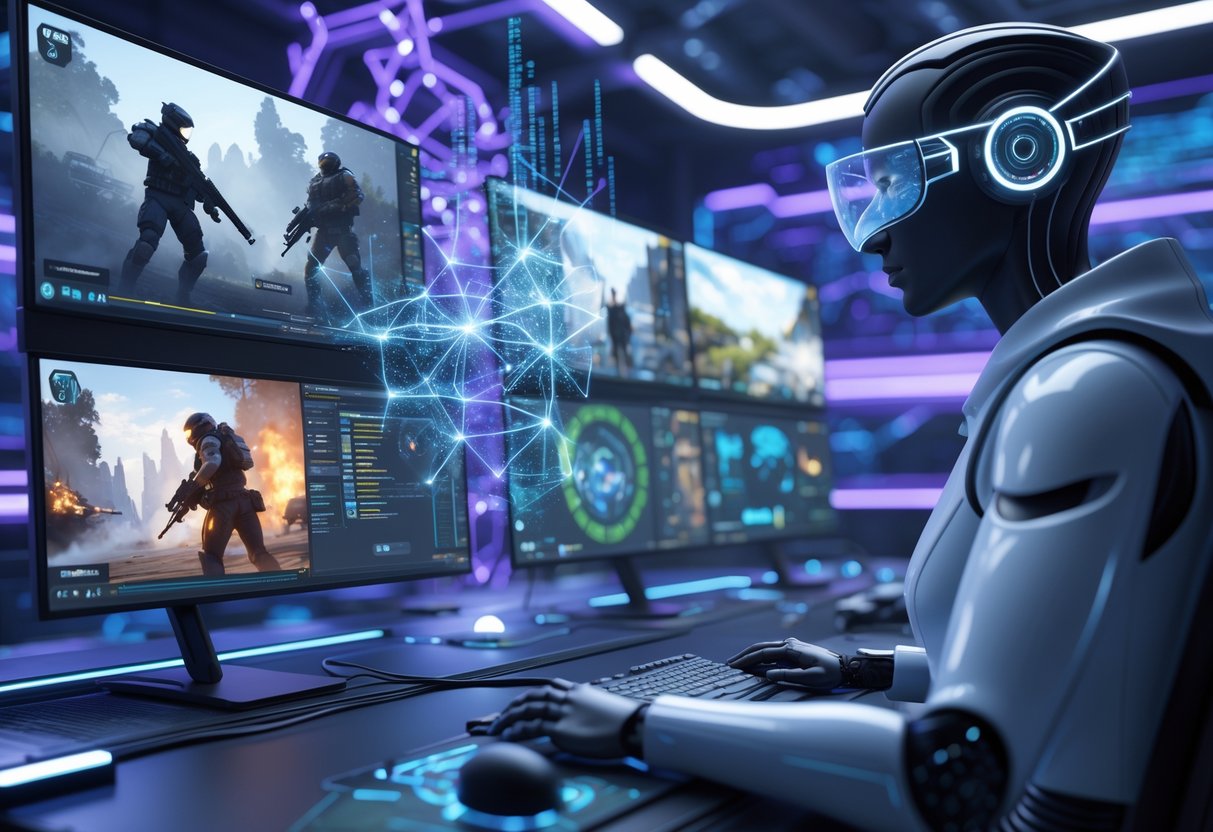
AI now digs into player performance across big titles like Valorant, League of Legends, and Counter-Strike. These tools look at everything from aim accuracy to in-game decision-making. Programmes like OpenAI Five have even shown that machine learning can handle insanely complex gaming environments.
Valorant and AI-Driven Talent Analysis
Valorant’s tactical shooter setup gives AI scouts loads of data. Platforms break down crosshair placement, reaction times, and utility usage over millions of ranked games.
AI tools track stuff like headshot rates, first-blood stats, and clutch round wins. They compare these numbers to the pros, so teams can spot rising stars.
Key Performance Indicators AI Monitors:
- Aim accuracy under pressure
- Map positioning
- Economy management
- Team coordination timing
A bunch of European orgs now use AI to scout Valorant academies. These platforms can chew through thousands of hours of footage in just minutes.
The tech picks out players who thrive in certain roles. Support players with top-notch utility timing get flagged differently than aggressive entry fraggers.
Gaming expert James Connolly points out that AI scouting cuts traditional talent searches by about 30%. Teams now find promising players way before they hit radiant.
Case Studies: Libratus, Deep Blue, and OpenAI Five
These AI systems proved that machine learning can rule competitive games. Each one took a unique path to beat human experts.
Deep Blue led the way in 1997, focusing on chess. Even though it wasn’t esports, it set the foundation for AI game mastery—principles we still use in modern scouting.
Libratus crushed pro poker players in 2017. Its knack for analysing bluffing and betting patterns actually helps identify psychological strengths in esports players now.
OpenAI Five stands out for esports scouting. This Dota 2 AI handled team coordination, resource management, and strategy shifts in real-time matches.
OpenAI Five’s training methods now shape how AI evaluates players. The way it predicts optimal plays helps scouts spot players with incredible game sense.
Modern platforms use similar neural networks to break down decision-making patterns. They catch tactical awareness that human scouts might miss during live matches.
AI in Esports Tournaments and Competitions
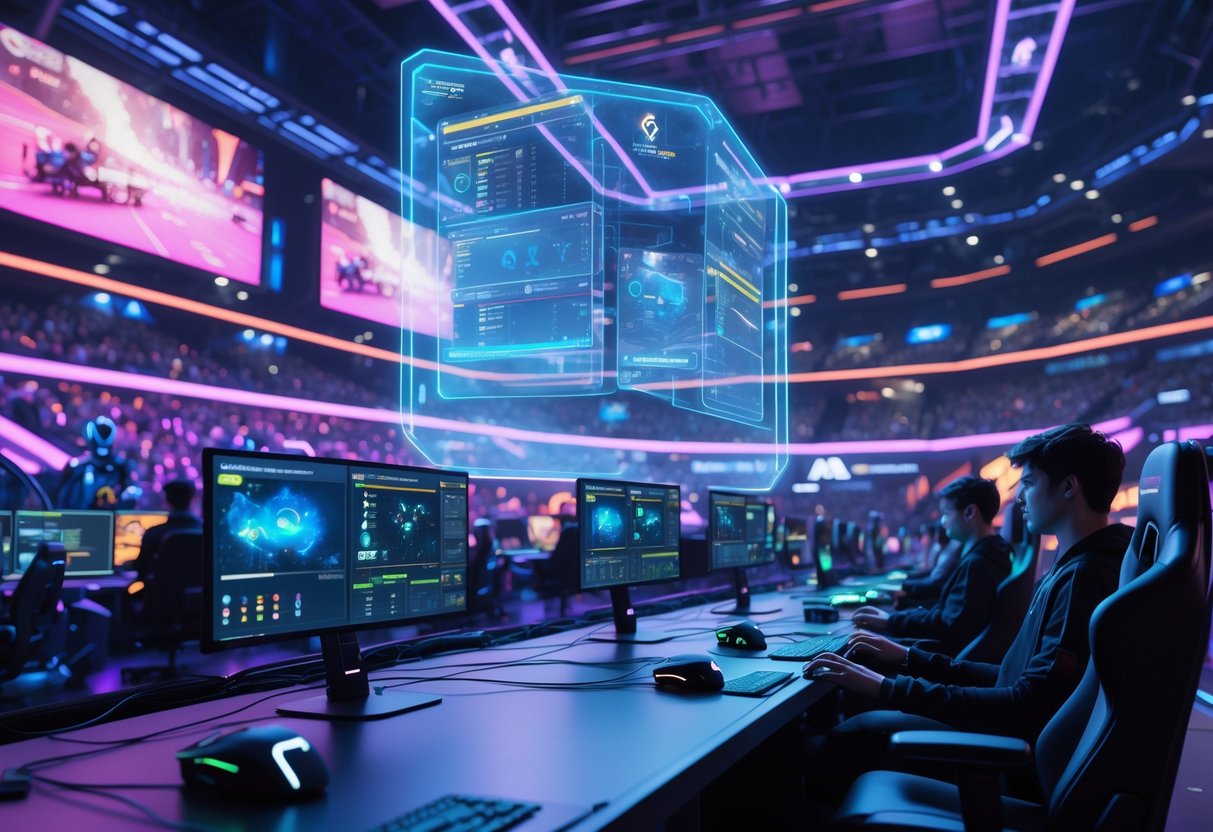
Tournament organisers now lean on AI to analyse player performance and guess match outcomes. Teams also use AI-powered insights during live games to gain a strategic edge. It’s honestly changing how tournaments get prepped and how teams react mid-match.
Integrating AI for Tournament Preparation
AI systems crunch massive piles of tournament data to help teams prep smarter. These algorithms look at opponent gameplay, map picks, and strategy habits from past matches.
SenpAI gives real-time analysis for games like League of Legends and Valorant. Teams can study opponent strategies and spot weaknesses before the match even starts.
Tournament prep now means:
- Player performance analysis across maps and modes
- Strategy prediction using opponent history
- Team comp optimisation based on win rates
AI opponents like OpenAI Five act as advanced sparring partners. These neural networks switch up their play styles, letting teams practice against all sorts of strategies.
Many pro teams say AI-powered prep slashes opponent analysis time from hours to minutes. The tech finds patterns in footage that humans would probably miss.
Real-Time Insights for Competitive Edge
During matches, AI spits out instant analysis that coaches and players can use between rounds. Teams get real-time feedback on how they’re doing compared to optimal play.
Modern setups now include AI that tracks:
- Player positioning accuracy
- Resource management
- Tactical decision success rates
Teams get this info during quick breaks, so they can tweak their strategy on the fly. The AI even calls out when opponents pull something unexpected, hinting at a possible strat change.
Quick win: Tons of semi-pro teams start with free AI tools before upgrading to premium tournament prep software.
Broadcasts get a boost from AI insights too. Viewers see win percentages and player stats pop up live, which actually helps newbies understand what’s happening.
Organisers use AI for fair matchmaking and to sniff out weird play patterns that might mean cheating. It keeps things fair and above board.
AI-Driven Player Behaviour Analysis

AI tools catch toxic behaviour and bad attitudes that can tank team performance. Companies like GGWP use machine learning to spot problems early and help make gaming better for everyone.
Identifying Negative Player Behaviour
Machine learning algorithms track player actions across thousands of matches. They watch chat logs, gameplay, and team interactions for red flags.
Natural language processing checks what players type in chat. AI can spot insults, threats, and other nasty language as it happens. It’s smart enough to tell when “trash” just means bad play, not actual abuse.
The systems also flag gameplay that hurts the team:
- Griefing – sabotaging teammates
- Throwing – giving up and playing badly on purpose
- Toxicity patterns – always negative attitudes
GGWP’s platform scans millions of chat messages every day. Their AI catches subtle harassment that human mods might overlook. It even spots players who hide their toxicity pretty well.
The tech goes way beyond just flagging bad words. It picks up on tone, context, and repeated patterns. Teams get a heads up about players who could wreck team chemistry before things go south.
Creating Healthier Gaming Environments
AI behaviour analysis helps teams build positive cultures. The data shows which communication styles actually lead to better results and happier players.
Teams use these insights to set clear standards. AI gives evidence-based reports on player behaviour over time, making tough conversations about attitude easier.
Positive reinforcement is part of the package too. The systems spot players who consistently encourage others and stay upbeat under pressure. These folks often turn into team leaders.
Recruitment gets a boost as well. Scouts can see how potential signings act in high-pressure games. A skilled player who’s toxic might do more harm than good.
Some organisations use behaviour scores alongside skill ratings. This gives a fuller picture of a player’s value. Teams that care about good behaviour usually perform better in the long run.
Enhancing Fan Engagement and Content Creation

AI is changing how esports content reaches fans with automated highlights and smart broadcasting tools. These techs create personalised viewing experiences and cut production costs for organisers.
AI-Generated Content and Highlights
Modern AI scans live matches to spot the most hype moments. These tools pick out multi-kills, clutch plays, and game-changing decisions in seconds.
Platforms like Twitch and YouTube Gaming use AI to whip up instant highlight reels. The tech checks gameplay data to pick moments worth sharing on social media.
Key benefits:
- Instant highlights during live matches
- Personalised content for viewers
- Editing time drops from hours to minutes
- Automatic tagging of players and teams
A lot of tournament organisers say AI-made highlights get 40% more social engagement than manual edits. The tech can even make different versions of the same clip for different platforms.
Shikongo Analytics tracks brand exposure by measuring how long sponsor logos stay on screen. This helps orgs figure out marketing ROI more accurately.
AI in Esports Broadcasting
Broadcasting platforms use AI to level up live commentary and deliver real-time stats. These systems break down matches and dish out dynamic insights for viewers.
AI-powered commentary tools spot tactical decisions and explain tricky strategies to newer fans. The language even adapts to the audience’s experience.
Current AI broadcasting features:
- Real-time player analytics
- Predictive match outcome numbers
- Automated camera switching for big moments
- Personalised viewing options
Companies like Weavr add VR and AR overlays to show live stats during matches. Viewers can pull up player bios, team histories, and tactical breakdowns without leaving the stream.
In the future, AI broadcasters might even offer multilingual commentary on the fly. That could make tournaments way more accessible worldwide.
The tech also helps smaller events run pro-quality broadcasts by automating production work that used to need a human crew.
AI Scouting and Esports Betting
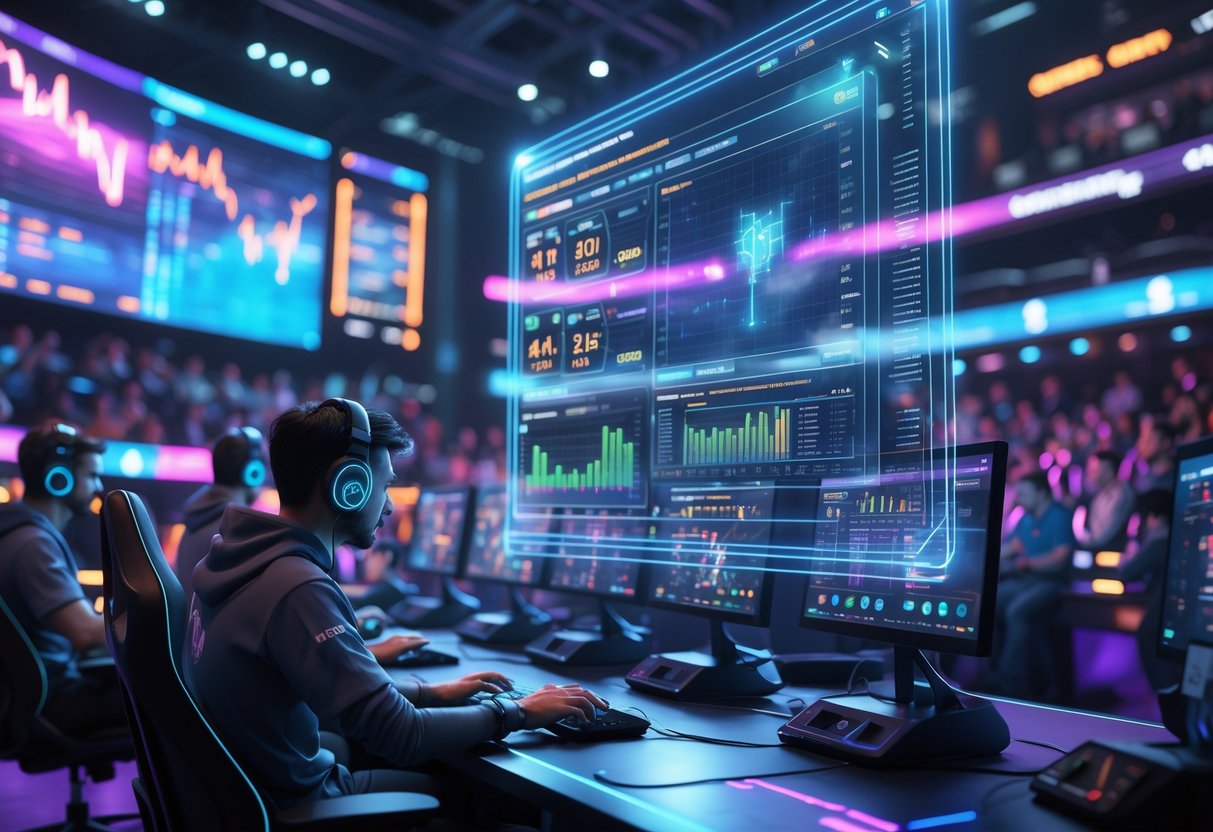
AI is shaking up esports betting with advanced odds modelling that processes player data in real-time. Betting platforms also pull talent insights from wagering patterns and performance stats.
Real-Time Odds Modelling & Simulation Systems
Bookmakers now use AI to set dynamic odds that shift every few seconds during live matches. These systems crunch thousands of data points—kill-death ratios, team economy, map control, you name it.
Real-time odds modeling & simulation systems look at:
- Player performance metrics
- Team comp effectiveness
- Past matchup data
- Current game variables
Advanced simulations run hundreds of possible outcomes at once. If a Counter-Strike team loses their star AWPer early, AI instantly recalculates win chances across all betting markets.
Esports tech like computer vision tracks mouse movements and reaction times live. This biometric data feeds straight into odds calculations, making betting lines sharper than traditional sports.
Popular platforms update odds every 0.3 seconds during matches. Bettors see lines move instantly after big plays, making for a way more dynamic experience.
Analysing Betting Data for Talent Insights
Data science teams at big betting companies spot promising players by watching for unusual betting patterns. When casual bettors keep backing an unknown player, that often hints at emerging talent before scouts pick up on it.
Spikes in betting volume around certain players show where the market’s confidence sits. Sometimes, betting data uncovers rising stars months before pro teams even notice them.
Key betting metrics that reveal talent:
- How often odds move on player props
- Where bets are concentrated regionally
- Consistent outperformance against the spread
- How fast live betting reacts to in-game events
Esports betting platforms share anonymised data with talent agencies. This creates a feedback loop—betting insights shape scouting, and scouting reports feed back into odds calculations.
Some organisations now hire former bookmaker analysts as talent scouts. These folks know how to read market shifts and separate genuine skill from a lucky streak, giving teams a more objective look at players than just the usual eye test.
Game AI and Non-Player Characters in Scouting
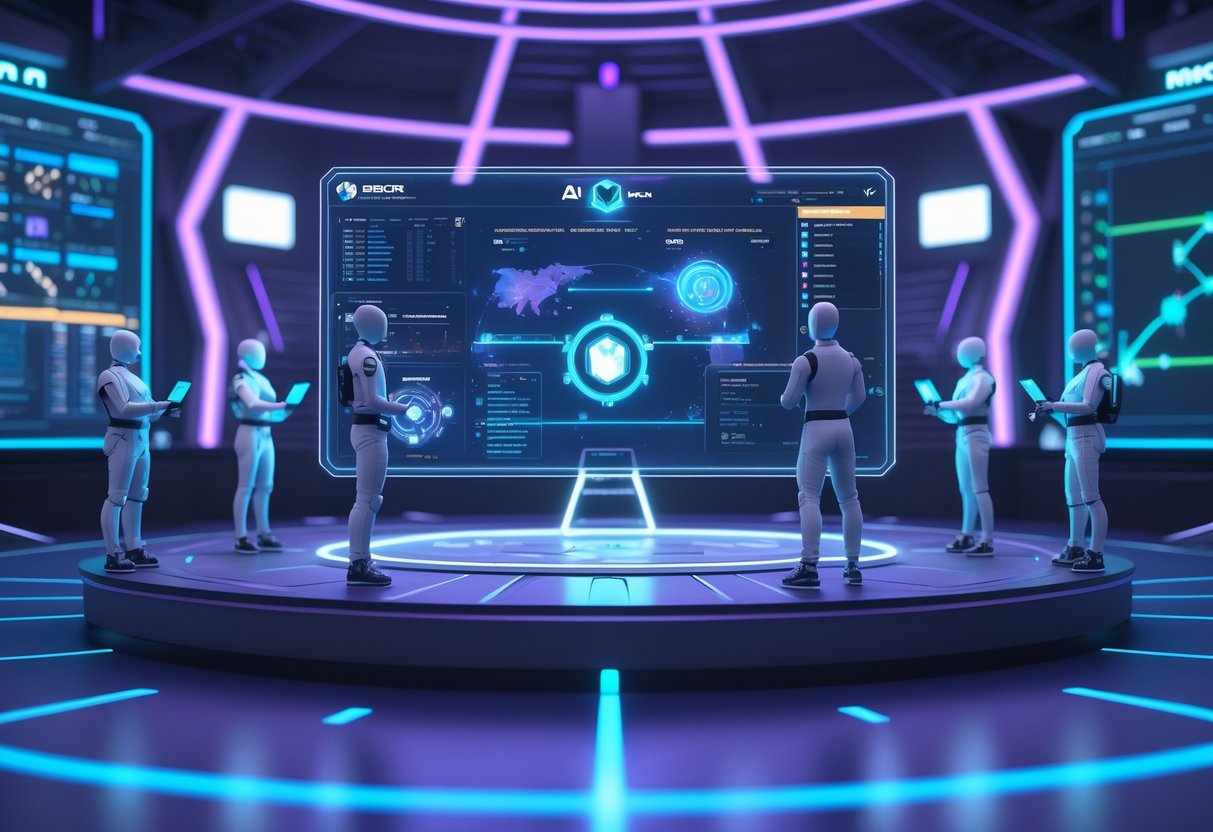
AI-powered NPCs and training environments are now essential for developing player skills and evaluating talent. These systems provide consistent, data-rich environments where scouts can watch players in controlled situations.
NPCs for Training and Skill Assessment
Modern games like Metal Gear Solid: The Phantom Pain and Middle Earth: Shadow of War use advanced AI systems to set up training scenarios. These NPCs run on finite state machines that react in predictable ways to player actions.
Training NPCs can mimic specific playstyles and skill levels. Scouts program them to test reaction time, decision-making under pressure, and strategic thinking.
That way, everyone takes the same standardised tests.
Key benefits for talent assessment:
- Difficulty levels stay consistent for all players
- Scouts get detailed performance metrics
- Scenarios can be repeated for fair comparison
- Human variables don’t mess with the testing
Games like Assassin’s Creed Rogue show how NPCs adapt to player behaviour. Scout teams use these systems to see how fast a player learns and tweaks their strategy.
They collect data on accuracy, response times, and tactical choices. Scouts use this info to spot natural talent, not just players who memorise patterns.
Enemy AI and Player Improvement
AI opponents double as training tools and benchmarks in competitive gaming. Unlike human opponents, AI enemies keep the same skill level and behaviour.
Pro teams use AI to practice certain scenarios over and over. They can set the AI to run specific strategies or counter-plays that teams need to master.
Training applications include:
- Nailing the timing on complex moves
- Learning where to stand against aggressive play
- Developing counters for common tactics
- Building muscle memory through repetition
Scout organisations watch how players do against tougher and tougher AI. Some players crush predictable AI but stumble against real people. Others keep getting better, no matter who they’re up against.
Enemy AI based on finite state machines lets scouts ramp up the challenge step by step. This shows a player’s skill ceiling and learning speed—huge factors when pro teams are picking new talent.
Challenges and Future Trends in AI Scouting
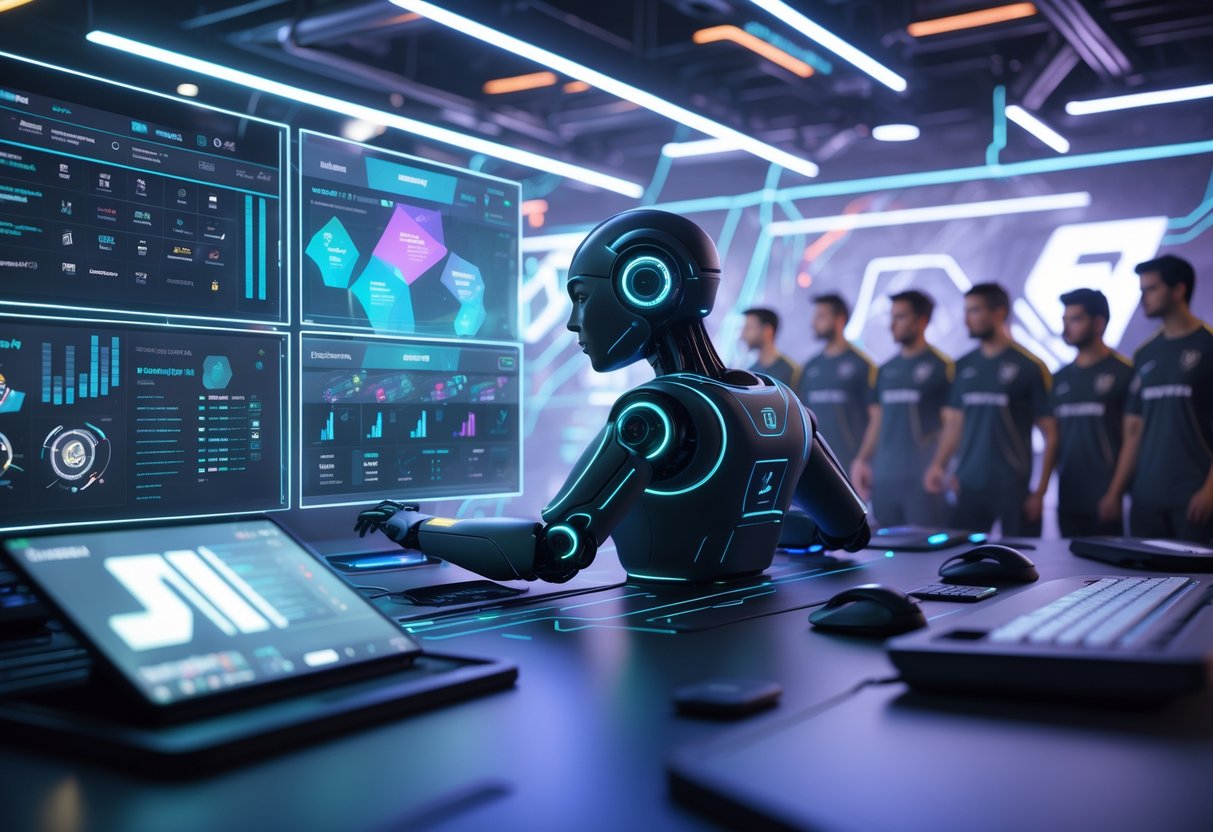
AI scouting faces tough hurdles around fairness and transparency. Game developers are changing how talent gets spotted, and these shifts might open up new opportunities—or just make the gaps wider in competitive gaming.
Ethical Considerations and Fairness
Data bias is probably the biggest headache for AI scouting systems. Lots of algorithms favour certain playstyles, regions, or game modes.
Players from smaller regions often get ignored because most training data comes from big tournaments. That just keeps established esports regions on top, while emerging markets struggle to get noticed.
Transparency is another big problem. Teams rarely explain how their AI ranks players.
This “black box” approach means players don’t know why they’re rejected or what to work on. Not knowing erodes trust between scouts and up-and-coming pros.
Gaming expert James Connolly says, “We’re seeing AI systems that can spot mechanical skill brilliantly but completely miss leadership qualities or clutch performance under pressure.”
Privacy concerns are growing too, since AI systems collect loads of gameplay data. Most players don’t realise what info teams are pulling from their matches.
The esports industry really needs clearer rules on data collection and player consent. Without proper safeguards, AI scouting could step on player privacy rights.
The Evolving Role of Game Developers
Game developers now have more power than ever in AI scouting, thanks to their control of player data and APIs.
Data access swings wildly from game to game. Some developers give out detailed stats, while others lock things down to protect competitive integrity.
This inconsistency means scouting opportunities aren’t the same across titles. Teams scouting League of Legends get rich datasets, but other games barely offer anything.
Built-in scouting features are popping up in more major esports games. Developers now add ranking systems and performance metrics aimed at spotting talent.
Companies like Riot Games are trying out AI-powered matchmaking that could double as scouting tools. These systems flag high-potential players during normal play.
Partnership opportunities between developers and esports organisations keep growing. Working together lets them build smarter talent ID systems.
The competitive gaming world will probably see developers launching their own scouting programs soon. That could cut costs for teams and centralise talent identification.
But when developers control everything, it raises questions about monopolies in esports.
Frequently Asked Questions
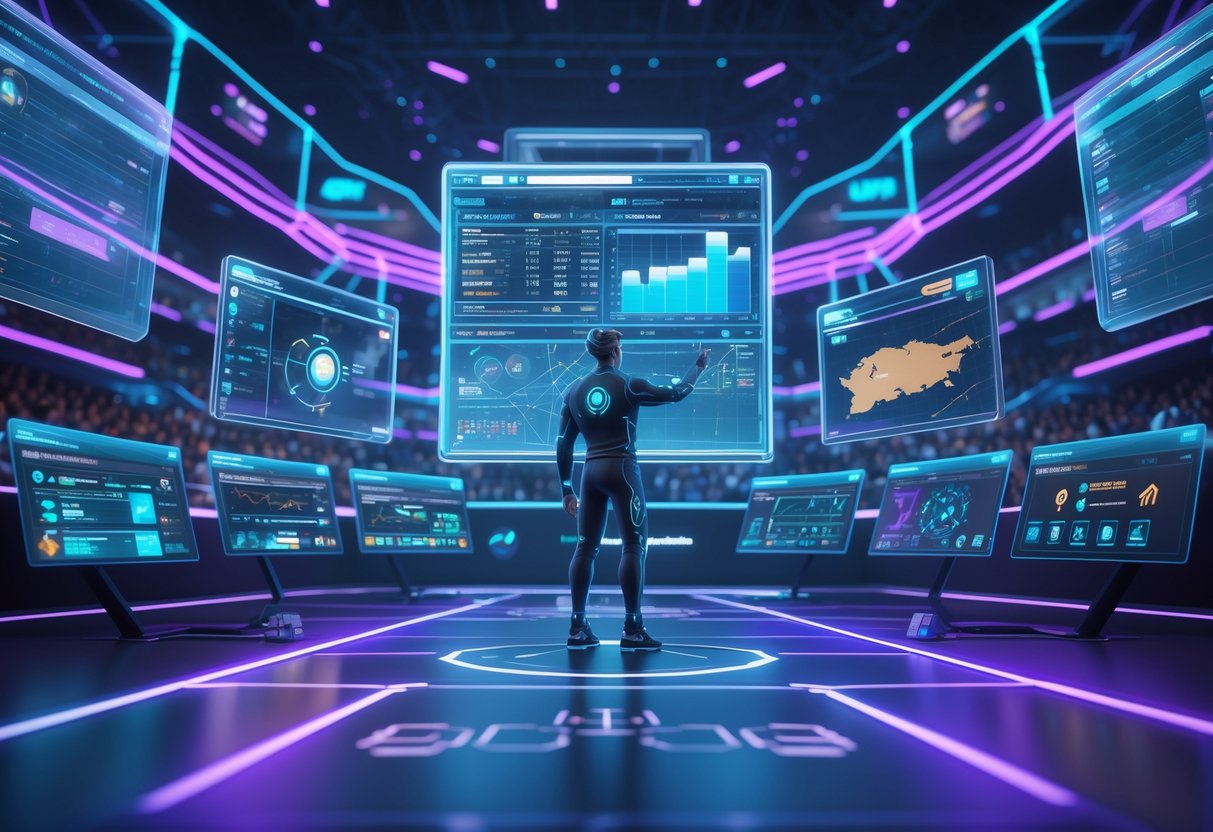
AI scouting brings a data-driven edge to finding esports talent. Here are some of the most common questions about how teams spot players, predict performance, and balance tech with old-school methods.
How can artificial intelligence enhance talent identification in competitive gaming?
AI picks up thousands of data points that humans miss during matches. It tracks reaction times, accuracy, decision speed, and how players hold up under pressure.
Traditional scouting still relies on watching matches and gut instinct. AI chews through gameplay footage non-stop, spotting patterns in player behaviour across hundreds of games.
The tech finds rising stars before they even hit big tournaments. Some studies say AI-driven scouting uncovers new talent 30% faster than manual methods.
AI also cuts out human bias. It focuses just on performance numbers, not popularity or team reputation.
What tools and metrics are most effective for AI to analyse player performance in esports?
Performance tracking software measures accuracy, kills per round, and how often players complete objectives. These tools capture every mouse click and keystroke.
Heat maps show where players move on the map. That highlights strategic thinking and game sense—key traits that separate good players from great ones.
Reaction time analysis measures how fast players respond to threats. Top-tier players usually react 15-20% quicker than the average.
Decision-making algorithms follow split-second choices during tense moments. AI can predict which players make better calls when things get heated.
In what ways can AI contribute to team composition and strategy development in esports?
AI analyses how different player styles mesh in team settings. It finds which skill combos build the strongest lineups.
The tech picks up on communication patterns between successful teammates. Some players thrive with aggressive leaders, while others need a more supportive crew.
AI also tracks opponent strategies and suggests ways to counter them. Teams can prep specific tactics before facing certain rivals.
Player synergy scores help managers put together balanced rosters. AI predicts which combos will gel and which might clash.
Can AI-driven scouting platforms predict future esports champions, and how?
AI uses historical data to spot improvement trends in developing players. It looks for those who keep growing, not just peaking once.
The tech tracks how players handle different situations. Future champs usually shine in clutch and high-pressure moments.
Predictive models also watch training habits and dedication. Players who stick to regular practice schedules tend to go pro faster.
Still, AI can’t account for things like team chemistry or personal motivation. Human factors matter a lot in winning championships.
What are the ethical considerations when implementing AI for scouting in the esports industry?
Player privacy is a huge concern with AI scouting. Teams need to get consent before analysing personal gameplay data in-depth.
Algorithmic bias might unfairly favour certain playstyles or groups. AI systems should get regular audits to keep things fair for everyone.
Young players could face extra pressure if AI labels them “future champions” too soon. That might mess with their growth or mental health.
Data security is a must. Stats and performance insights could be valuable to rivals if they leak.
How does AI scouting integrate with traditional methods of player evaluation in esports?
Most successful teams actually blend AI insights with human observation. Coaches sit down and watch matches, picking up on teamwork and communication skills that algorithms just can’t catch.
AI usually handles the first round of screening for potential recruits. After that, human scouts step in to run interviews and set up trial sessions with the players who stand out.
Traditional scouting digs into personality fit and whether someone meshes with the team culture. Meanwhile, AI sticks to the numbers—raw skill metrics and how consistent a player performs.
Honestly, the smartest teams use AI for the heavy data lifting but always keep people in the loop for the final call. This way, nobody gets stuck relying on algorithms alone.


